Configuring activities
Keep students on track, efficiently and effectively
It is possible to define multiple types of activities which students are expected to fulfil as part of their portfolio.
You can add predefined activities via the 'New activity' button in the timeline.

Entry deadline
An entry deadline is used when you want students to submit an entry using a specific template before a deadline.
This type of deadline contains the following content:
- Display name: This will show in the timeline as a way to navigate back to this entry deadline.
- Template: You can either select an already created template, or create a new one by clicking "create a new template".
- Description and Files: These will be presented above the rest of the template content and can be used to provide additional context as to what the deadline entails.
- Due date: Students are expected to finish their entry by this date, but can still submit it afterwards.
- Unlock date: Students can start working on the activity from this date onwards.
- Lock date: Students will no longer be able to submit their entry after this date.
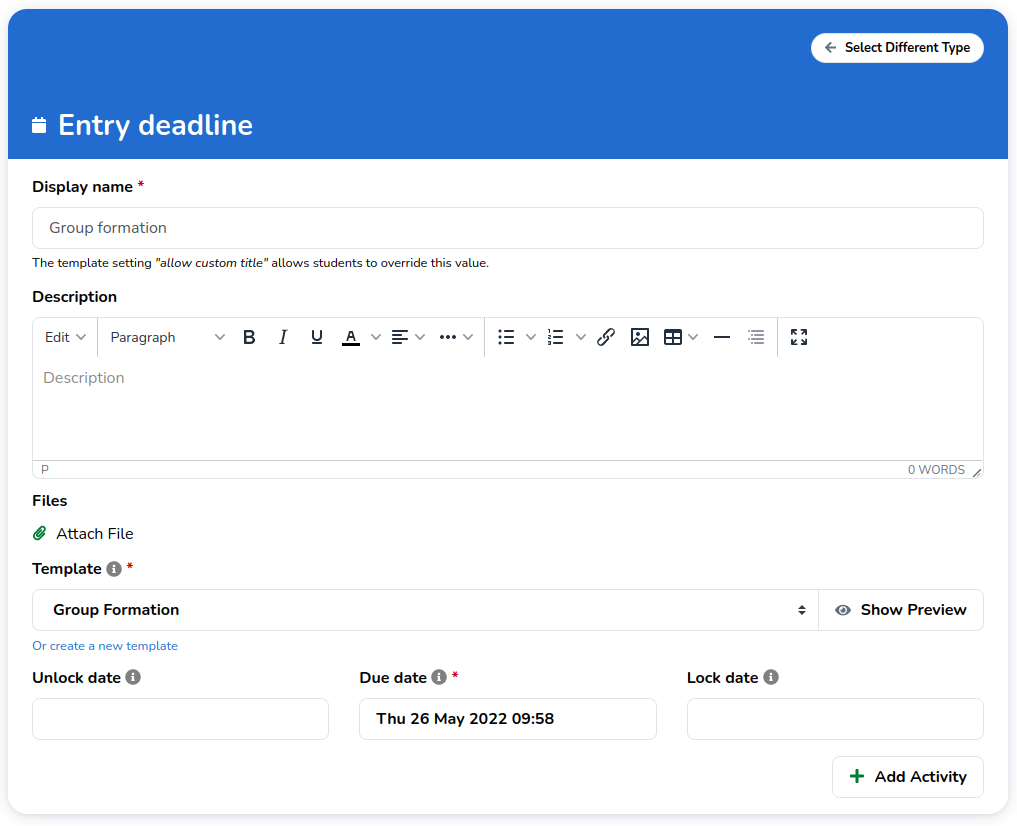
Progress goal
A progress goal is used to indicate the point target that should be achieved by a certain date. For example, you can require students to collect 10 points during the first year, and another 10 during the second year. When a progress goal is not met, the student can still continue to work on their journal.
Such a deadline contains the following content:
- Display name: This will show in the timeline and as a way to navigate back to this progress goal.
- Description and Files: These can be used to further clarify the progress goal.
- Due date: Students are expected to finish their entry by this date, but can still submit it afterwards.
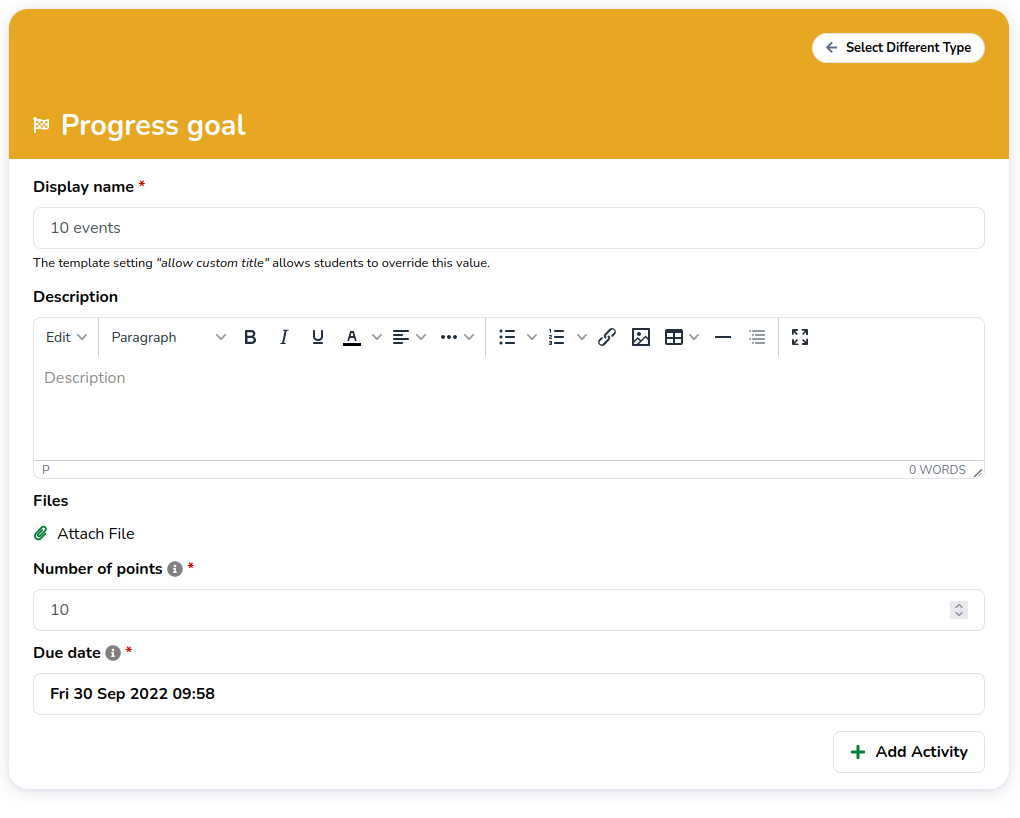
Peer feedback
A peer feedback activity is used to ask students to provide feedback on a certain aspect of one or more portfolios.
The configuration of a peer feedback activity consists of three steps:
Info
Step 1 and 2 need to be completed before step 3 (assigning reviewers) becomes available.
Instructions
When a student inspects an activity, the first thing they are presented with are the instructions.
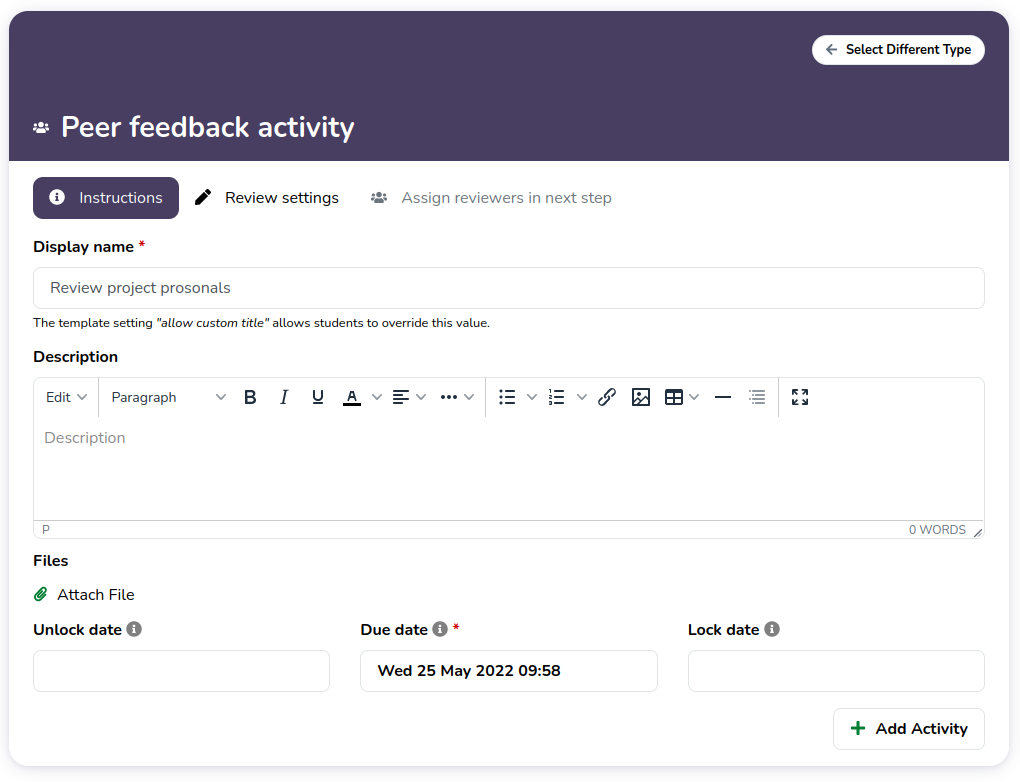
- Display name: This determines the label of the activity in the timeline.
- Description and Files: These can be used to provide particular instructions for performing the review.
- Due date: Students are expected to finish the peer feedback activity by this date, but can still submit it afterwards.
- Unlock date: Students cannot start the peer feedback activity before this date.
- Lock date: Students can no longer work on this peer feedback activity after this date.
Review settings
The review settings of a peer feedback activity consists of three parts: content selection criteria, comment and anonymization settings, and rubric configuration.
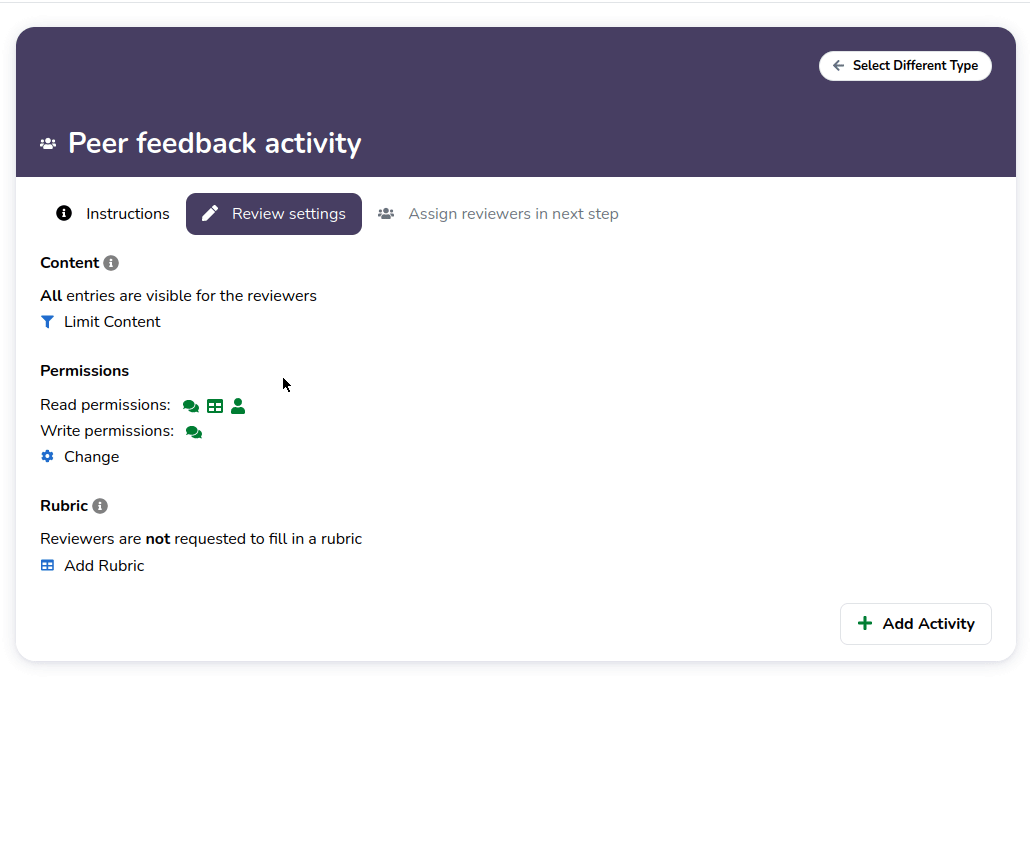
Content selection criteria
The content selection criteria determine which entries of a portfolio are included a peer feedback activity.
By default, the entire portfolio (all of its content) is included in the peer feedback activity.
It is possible to mix and match all content selection criteria. Whether an entry is included is determined as follows:
- Does the content fall within the configured time range?
- If any of the category, template or activity filters are enabled, does the content correspond to at least one of these filters?
If the answer is yes to both questions the portfolio content will be included in the peer feedback activity.
Quickly view which activities are included in the peer feedback activity
When a peer feedback activity is selected, all related activities in the timeline are highlighted with the purple background.
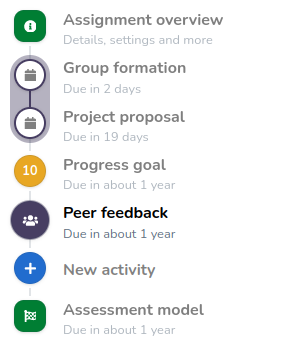
Rubric
It is possible to provide a rubric to help students structure their feedback during a feedback activity. If no rubric is selected, students can still comment on the journal entries that are part of the review activity, as well as leave textual overall feedback.
Comment and anonymization settings
You can configure when feedback should be shown to the journal author, and whether reviews should be anonymized.
- Reviewers can see other comments: Determine whether reviewers can see comments other than their own.
- Publish comments to students: When should feedback placed by reviewers be published to the reviewee? By default feedback is visible immediately once published. However, its also possible to leave this up to the reviewer, or publish all feedback once the due date passes.
- Show entry grades to reviewers: This setting can make the grades of individual entries available to the reviewer.
- Anonymous journals for reviewers: Anonymize the reviewee information for the reviewer.
- Anonymous reviewers: Anonymize the reviewer information for the reviewee.
Assigning reviewers
Once the feedback activity has been added to the timeline, it possible to assign reviewers.
Reviewers can be assigned manually or automatically. Manual assignment allows you to choose who should review whom exactly as you would wish. However, generally it makes sense to make use of the automatic assignment functionality. This works as follows:
- Set a group size. This determines how many students will be grouped, and within each group each student will have to review one another.
- Determine when the assignment should take place:
- Once the Unlock Date of the activity passes (this requires setting an unlock date in the instructions tab for this activity).
- It is also possible to assign reviewers immediately, this is done via the Assign Now button.
Warning
Once manual assignment has taken place, it is not possible to perform automatic assignment any more.